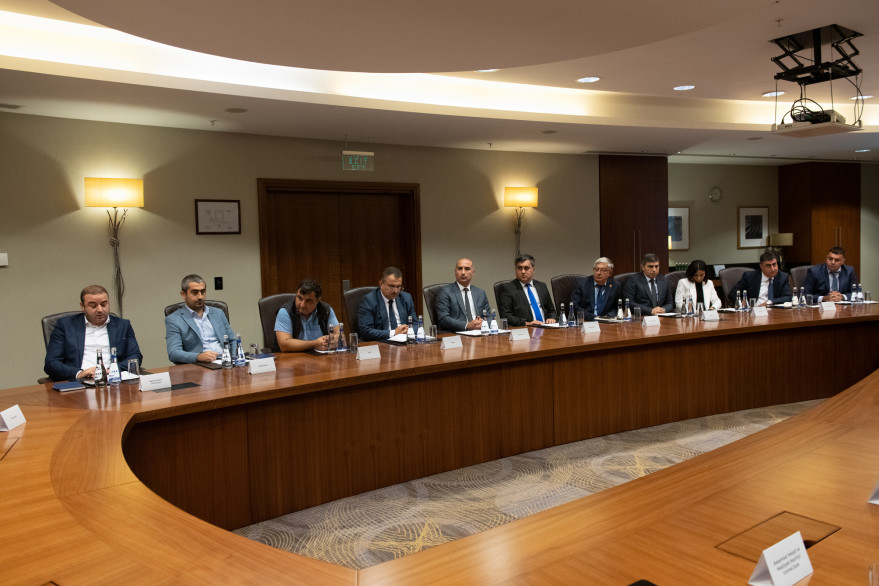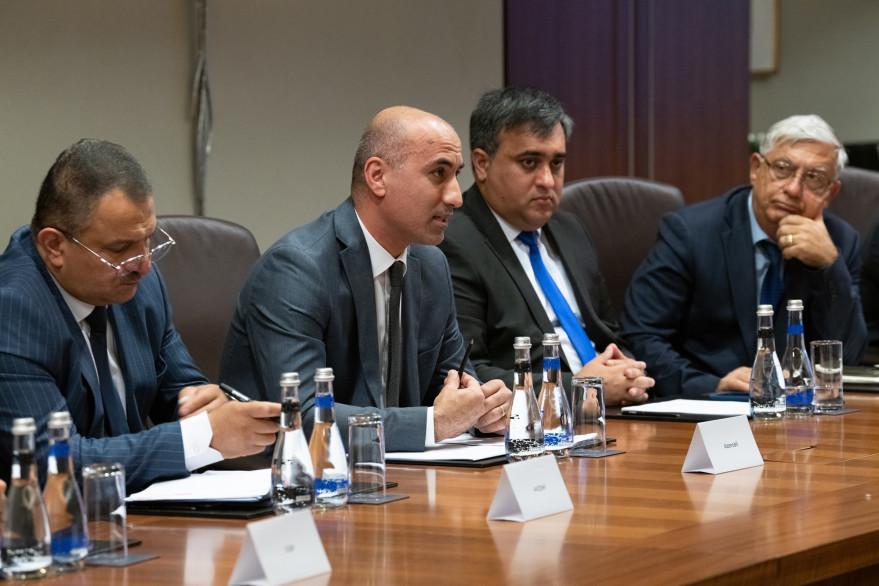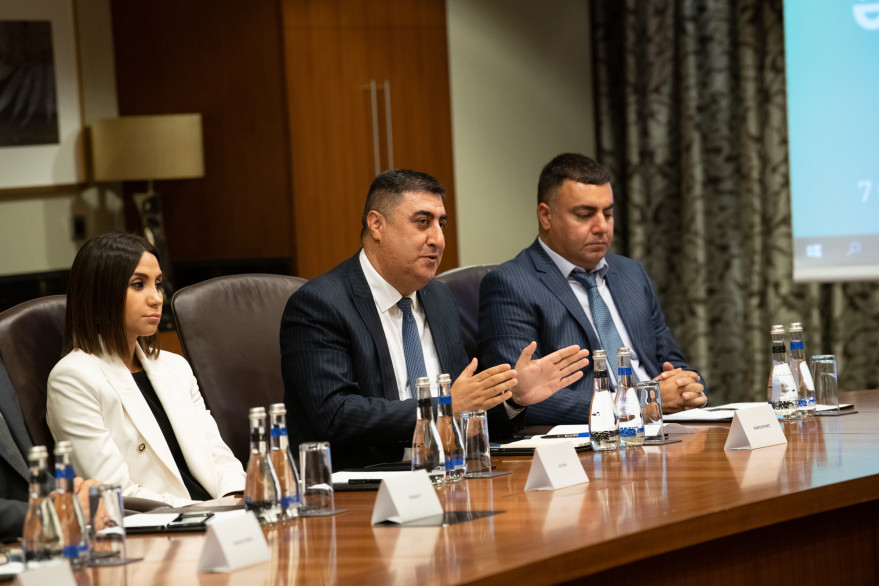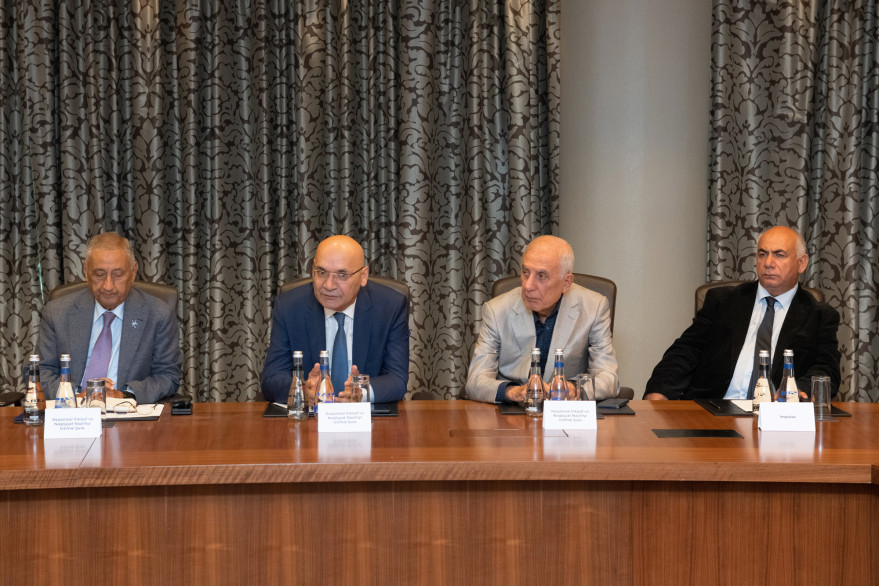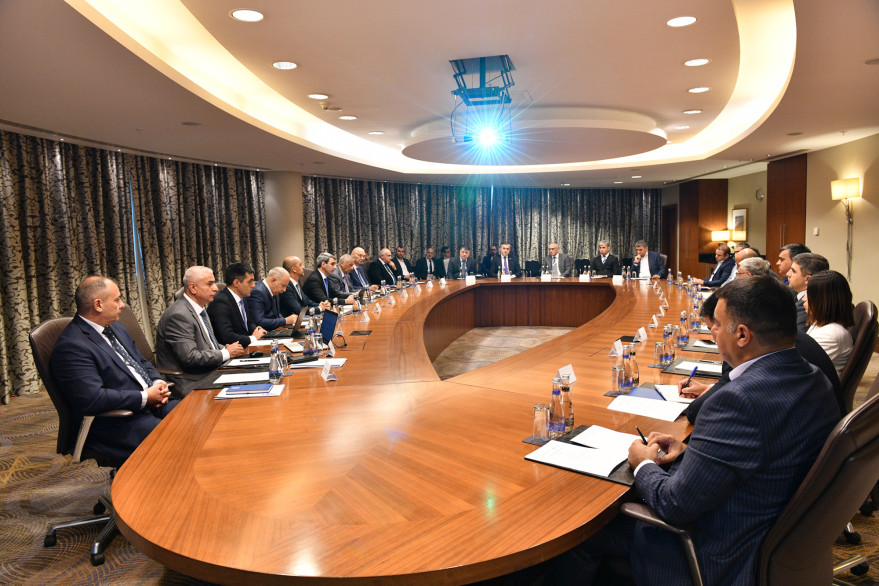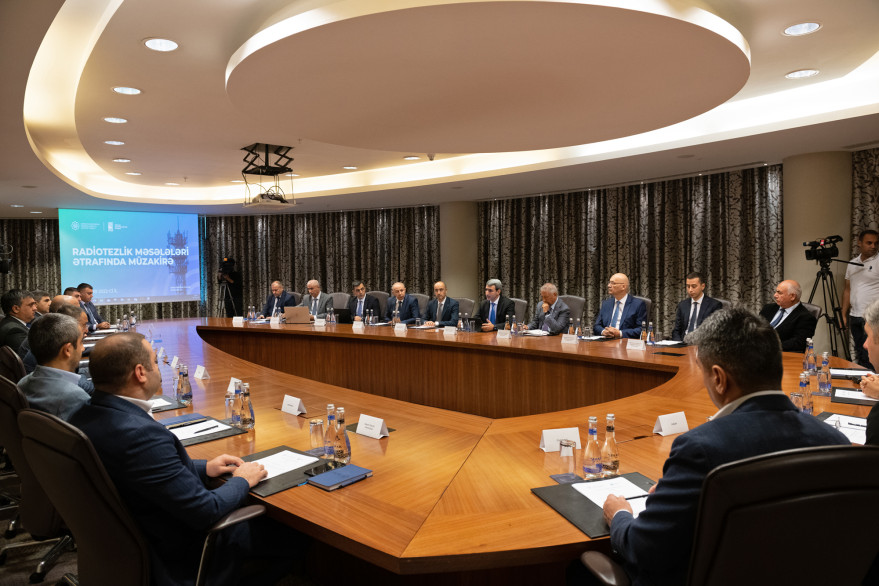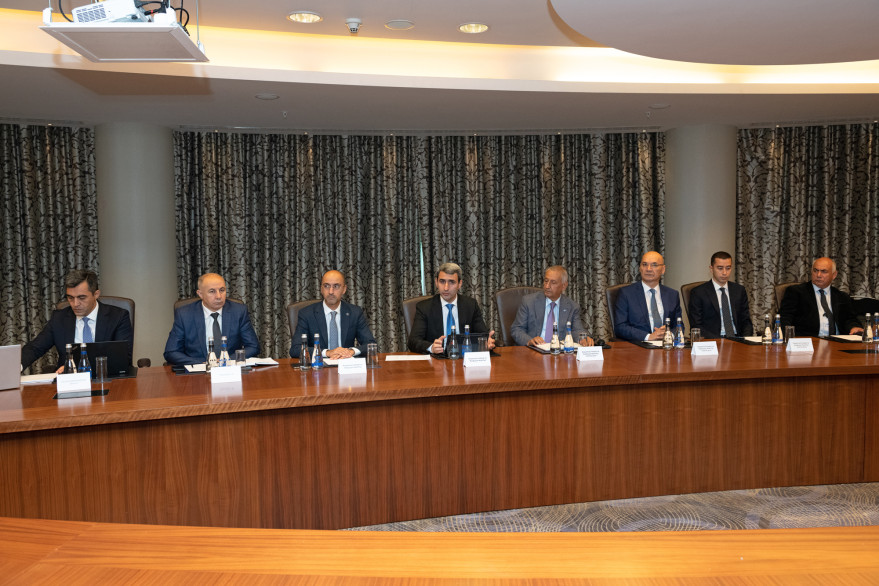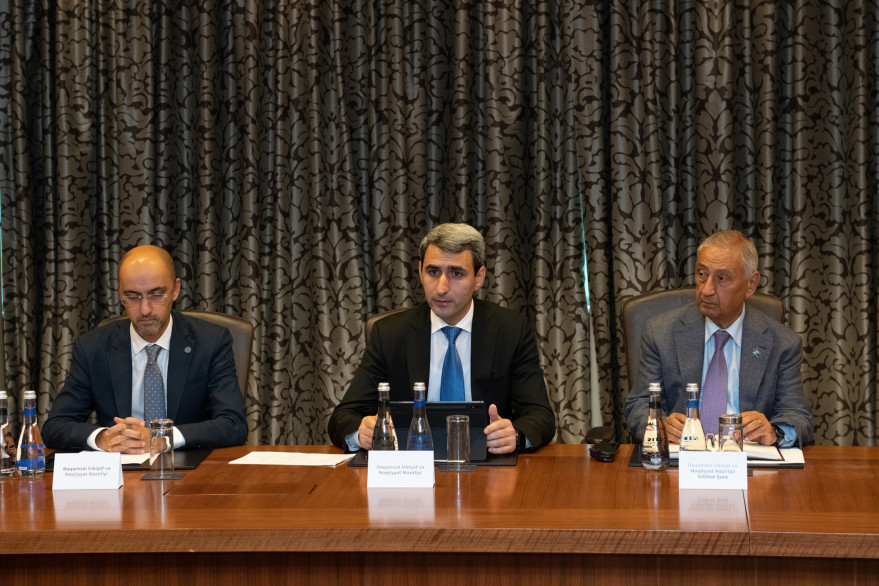MDDT holds roundtable on use of radio frequencies

On 7 October, a meeting was held on the use of radio frequencies. The event, organized by the Ministry of Digital Development and Transport (MDDT), was attended by members of the Public Council under the Ministry, company officials that are radio frequency users, representatives of various organizations and specialists.
Speaking at the meeting, Deputy Minister of Digital Development and Transport Rovshan Rustamov informed radio frequency users of the work done recently and innovations in this field: “The most important element on the way to building an innovative society and digital economy in our country, as well as digital transformation is the availability of a reliable, fast and accessible internet network. In this direction, 370,000 households were connected to a high-speed internet network based on GPON technology before the end of 2021 within public-private partnership, and another 420,000 households are planned to be connected in 2022. By the end of 2024, it is planned to provide internet access to all households in the country and increase the minimum average internet speed to 25 Mbps.”
The Deputy Minister noted that after the State Commission for Radio Frequencies began its activities in 2022 after a four-year break in its new format and composition, there was a special revival in the allocation of frequencies. Important regulatory documents governing this field were adopted and up to 400 appeals were considered, including those received during the non-functioning of the State Commission. Appropriate decisions were made on all of the appeals considered.
Rovshan Rustamov said that the “Clean Radio Air” concept has been put forward. The concept provides for minimization of unauthorized use of frequencies by introducing automation in radio frequency management, ensuring accessibility and air safety in the use of frequencies and simplification of processes. Concrete work has already begun to implement the concept. Thus, the project “Simplification of the registration procedure for radio electronic devices and allocation of radio frequencies” has been launched. The project provides for the issuance of relevant authorizations for radio electronic devices (REDs) and the process of their registration on the basis of the “one-stop shop” principle. The service is planned to be launched by the end of the year.
The Deputy Minister added that at the same time the use of 446,000–446,100 MHz frequency band for the purpose of using analogue and digital PMR 446 mobile radios has been simplified. From now on, those wishing to use this frequency may apply not to the State Commission, but directly to the State Administration of Radio Frequencies under the Ministry of Digital Development and Transport, and begin using the frequency within three days after submitting appropriate documents. Prior to this, the process of allocating frequencies took an average of two months.
It was also stressed at the meeting that taking into account the decisions and recommendations of international organizations and the experience of most countries in the world, the new tariff methodology in the field of frequencies was adopted, and starting from 28 September 2022 tariffs are determined in accordance with this methodology. The methodology allows the use of upper frequency bands even cheaper and also reduces the cost of radio frequencies in the regions by 25% and by 2.6 times in the liberated territories. Compared to previous tariffs, registration fees have been abolished. Only the one-off and annual cost of operation will be paid. Whereas previous tariffs were based mainly on the number of REDs, the new methodology takes the volume (width) of the radio frequency band as the basis, which makes it impossible for the users to use unregistered REDs. Thus, Azerbaijan has ensured a transition from “RED-based tariffs to frequency-based tariffs” in line with the international approach.
Some radio frequency users still use unregistered REDs on frequencies allocated to them without authorization, and in some cases even unallocated frequencies. In 2021, 3,000 and in the first nine months of current year 3,500 such illegal REDs were detected. Other measures continue to be taken against illegal frequency users and illegal import and use of REDs.
It was noted that the ultimate goal of innovations in the field of radio frequencies is to provide legal, economic and technical regulatory instruments for transparent, fair and efficient use of radio frequencies by users, to improve service levels, and to stimulate the development of new and wireless technologies and efficient use of frequencies in our country.

